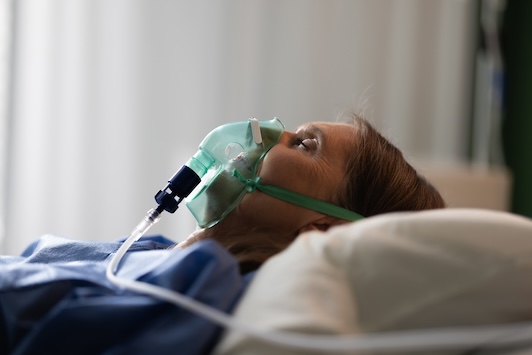Nitrous oxide (N2O) is an important contributor to climate change; not only is it a greenhouse gas (GHG), it is also an ozone-depleting agent. It is the third most significant GHG in the atmosphere after CO2 and methane, and is the largest remaining threat from ozone-depleting substances in the stratosphere1. N2O is a medical gas that is used as an inhaled drug in a select few areas in a hospital for its anesthetic and anti-anxiety effects.
In Canadian hospitals, N2O is often administered through a centralized system. It is typically stored in a bulk tank or large central cylinders and is delivered through gas distribution piping. Studies in Canada2,3, the US4 and Europe5 have shown that these tanks and distribution piping can leak significantly even with regular preventative maintenance, venting N2O directly to the surrounding environment.
Engineers and facility experts across Canada are evaluating existing systems and have found that N2O leakage can be very high, accounting for as much as 85-99 per cent of its total use. In 2023, one health system in Ontario emitted the equivalent of 1050 tC02 from N2O; approximately 90 per cent of these emissions were the result of leaked N2O from distribution piping (M. Apostol, personal communication, April 26, 2024). Fixing these leaks is labour intensive and costly and the areas from where a leak can develop are unpredictable, raising significant concerns for exceeding occupational health and safety limits of the gas in patient and staff areas.
Nitrous oxide has limited clinical use in current medical practice. Routine use of nitrous oxide in patients having surgery and requiring general anesthesia has decreased considerably with the awareness of its environmental impact. As well, many studies have confirmed that nitrous oxide, as an adjunct to other anesthesia drugs, confers no clinical advantage. For that reason, the Canadian Guidelines to the Practice of Anesthesia: Revised Edition 20236 suggest that N2O use in anesthesia be eliminated. However, N2O continues to be used for women in the birthing suite who are in active labour. Inhalation of N2O somewhat lessens the pain of labour, though most parturients eventually transition to a more effective form of labour analgesia. N2O can easily and more efficiently be delivered to labouring patients using portable cylinders without the disadvantages of leakage.
While many existing health systems are working toward N2O mitigation by decommissioning central N2O infrastructure and changing to small point-of-use portable cylinders, new hospital developments should not install centralized N2O delivery systems at all. Policy papers from the US7 and UK8 support the omission of centralized delivery systems in new hospitals. The Centre hospitalier de l’Université de Montréal is a new build that was completed in 2017. In 2022, maintenance and leakage led to N2O release more than ten times greater than estimated clinical use. After discussion with clinicians, to prevent future leaks and lower ongoing maintenance costs, the central N20 tank and piping was decommissioned. N2O delivery was replaced with portable cylinders, reducing greenhouse gas emissions, maintenance requirements and costs (S. Williams, personal communication August 29, 2023).
Health care engineers are in a unique position to work with their architects, designers and clinical teams, in order to educate about the disadvantages of centralized N2O delivery systems. There appears to be no advantage of having a centralized supply at all.
N2O delivery from portable systems or E-cylinders are more environmentally and economically efficient for all areas of delivery. Existing systems should be evaluated and new hospital builds avoid the installation of centralized N2O infrastructure, which will save money, reduce direct greenhouse gas emissions, and protect the ozone layer.
The authors are collaborators with the Canadian Coalition for Green Health Care. For feedback, please contact Anita Rao: anita.rao@thp.ca


